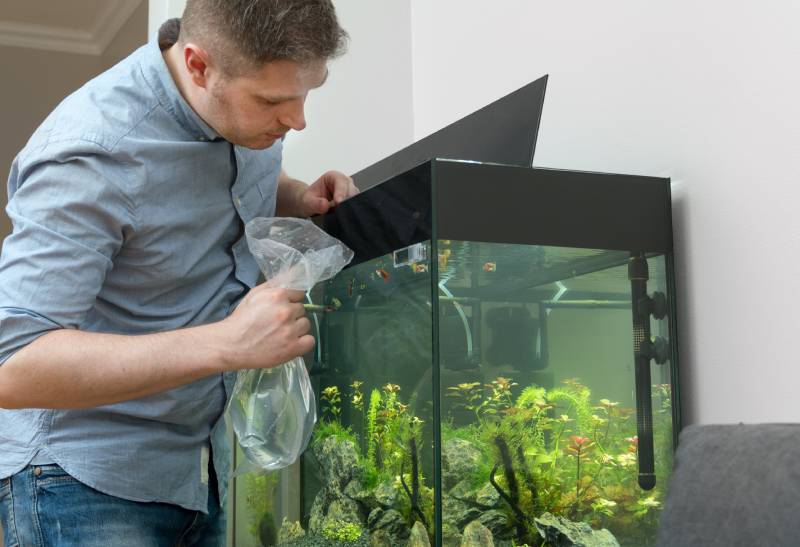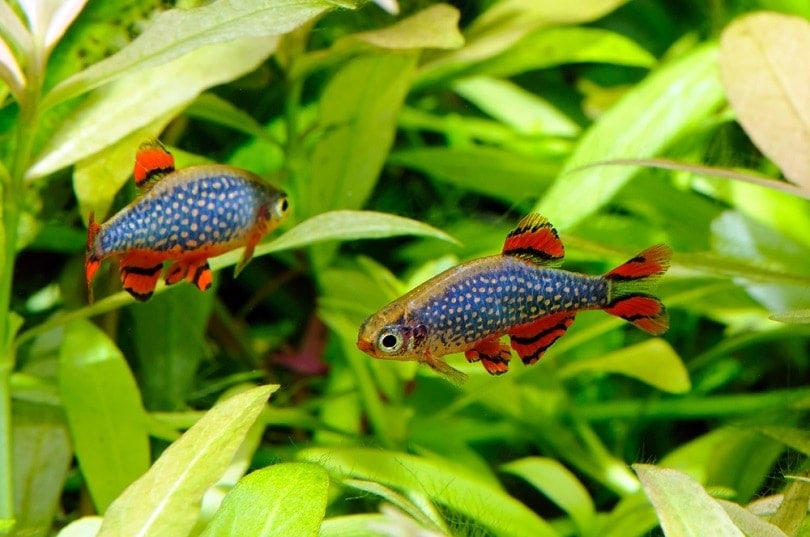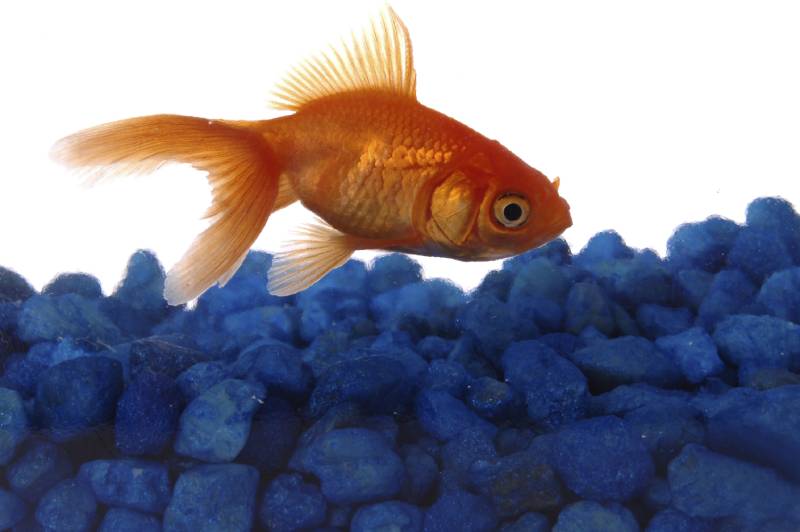10 Great Tank Mates for Yoyo Loaches (With Pictures)
Updated on
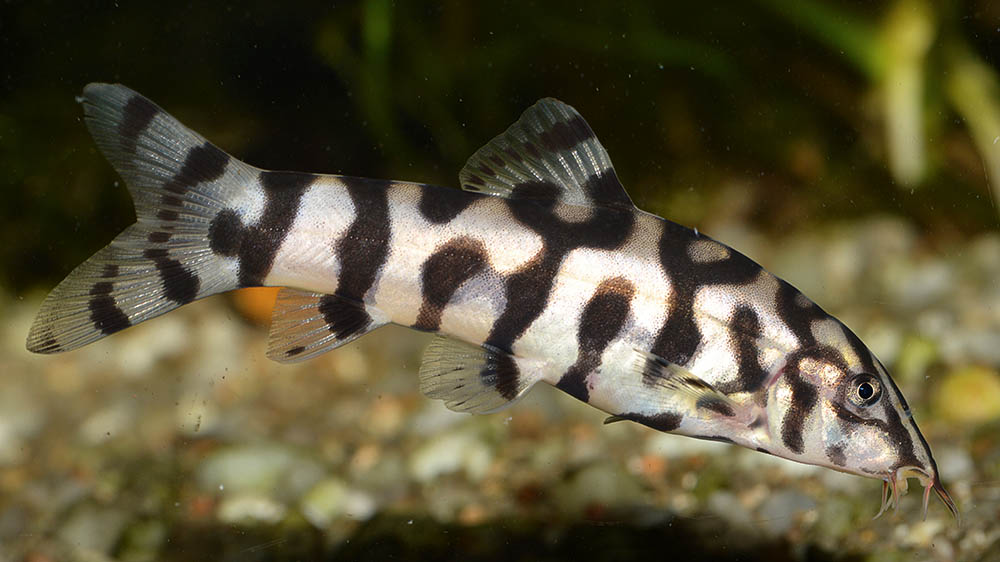
Click to Skip Ahead
Yoyo loaches are a small loach species that act as scavengers in aquariums. They are active fish and can be quite enjoyable to watch while they scoot around the tank. They exhibit unusual behaviors, like playing dead when frightened, and are popular for their manageable size and active tendencies.
However, Yoyo loaches are considered semi-aggressive fish, so choosing tank mates for them must be done with careful consideration. Checkout some great options below.
The 10 Tank Mates for Yoyo Loaches
1. Angelfish
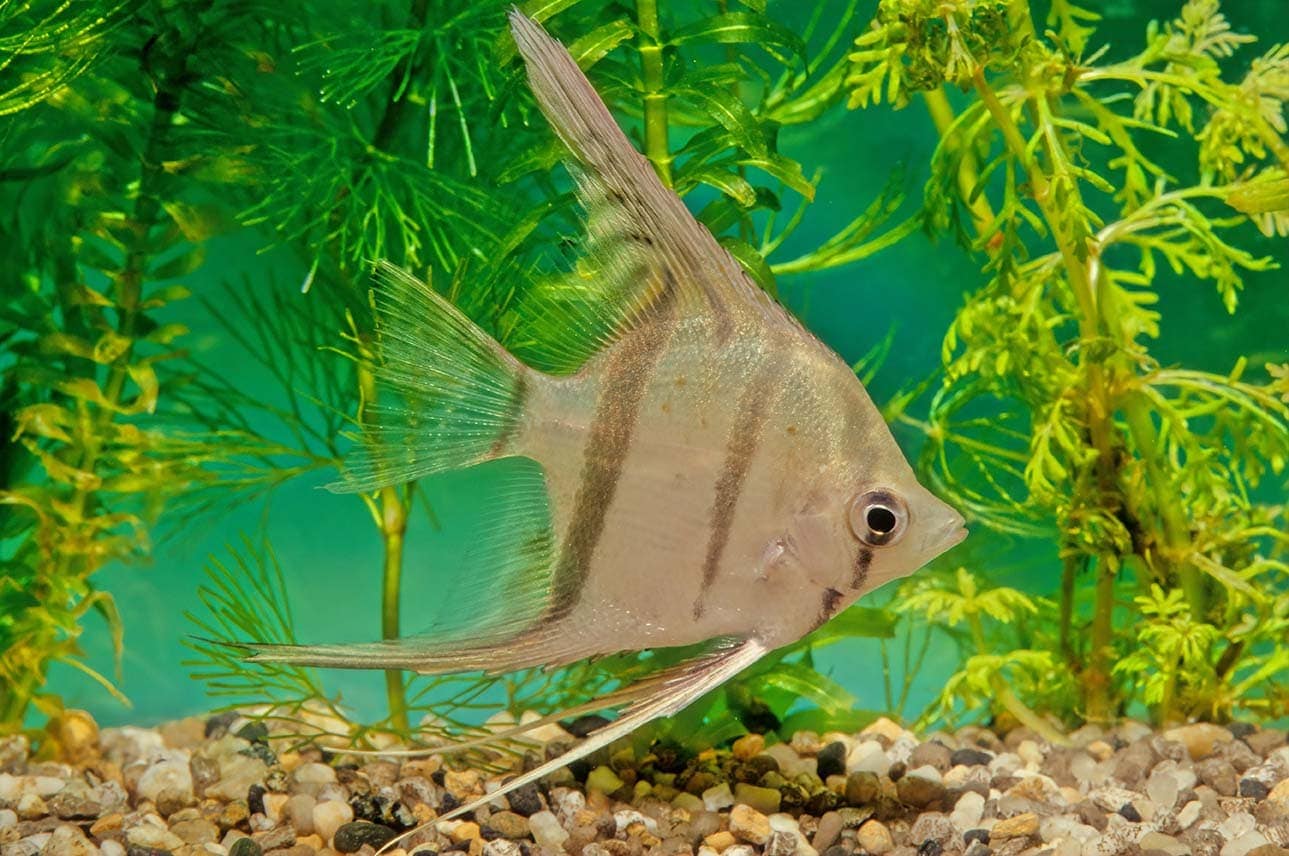
| Size | 4–6 inches (10.2–15.2 cm) |
| Diet | Omnivore |
| Minimum tank size | 30 gallons (114 liters) |
| Care Level | Medium |
| Temperament | Generally peaceful |
Angelfish typically grow to around 6 inches in length, but they are known for their tall bodies and fins, which can grow to 8–10 inches. They are generally peaceful fish that spend most of their time in the middle to lower portions of the water column. They can become territorial and are often stressed when kept alone, so plan to keep a small group of them. These fish are able to stand up for themselves if needed but don’t typically seek out a fight.
2. Glass Catfish – Best for Oddball Tanks
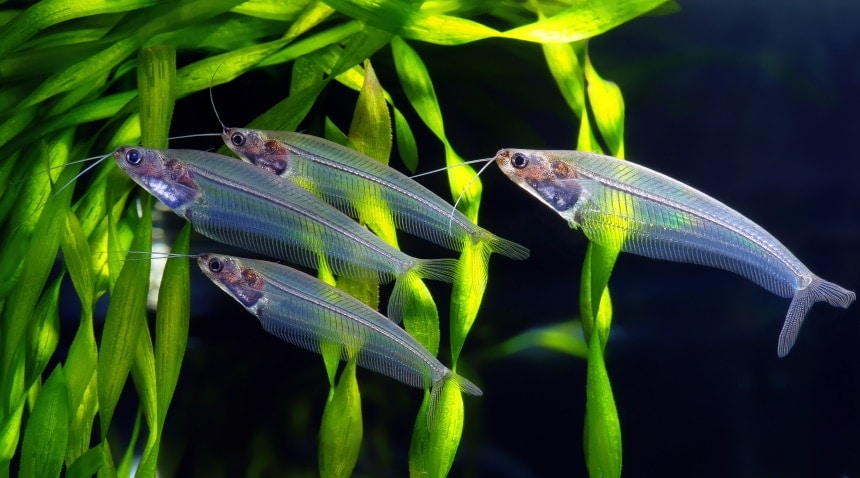
| Size | 4–6 inches (10.2–15.2 cm) |
| Diet | Omnivore |
| Minimum tank size | 30 gallons (114 liters) |
| Care Level | Medium |
| Temperament | Timid |
If oddball fish are your thing, then the Glass Catfish may be your favorite option as tank mates for your Yoyo loaches. These unusual fish are completely transparent, which serves as natural camouflage for them. They are timid fish that prefer to be kept in groups of at least six to help them feel safe and comfortable. They are peaceful and will generally keep to themselves in the middle portion of the water column. They have been known to eat very small tank mates, like guppy fry and shrimplets.
3. Clown Loach
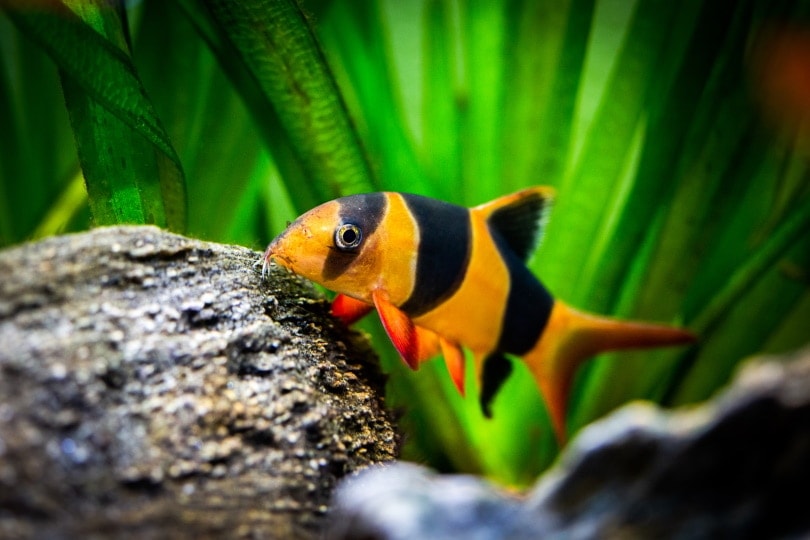
| Size | 6–12 inches (15.2–30.5 cm) |
| Diet | Omnivore |
| Minimum tank size | 55 gallons (208 liters) – juvenile, 100 gallons (379 liters) – adult |
| Care Level | Medium |
| Temperament | Peaceful, playful |
Clown loaches are fun fish with playful personalities. They are often found in the lower part of the water column and the bottom of the tank scavenging for snacks. They are peaceful fish that do best in groups. Many people underestimate the size that these fish can reach, so they often end up in tanks that are too small. This can lead to stress and often ends up with the fish being rehomed. If you want Clown loaches, be prepared to invest in a tank that is at least 100 gallons by the time they’re adults.
4. Fancy Goldfish
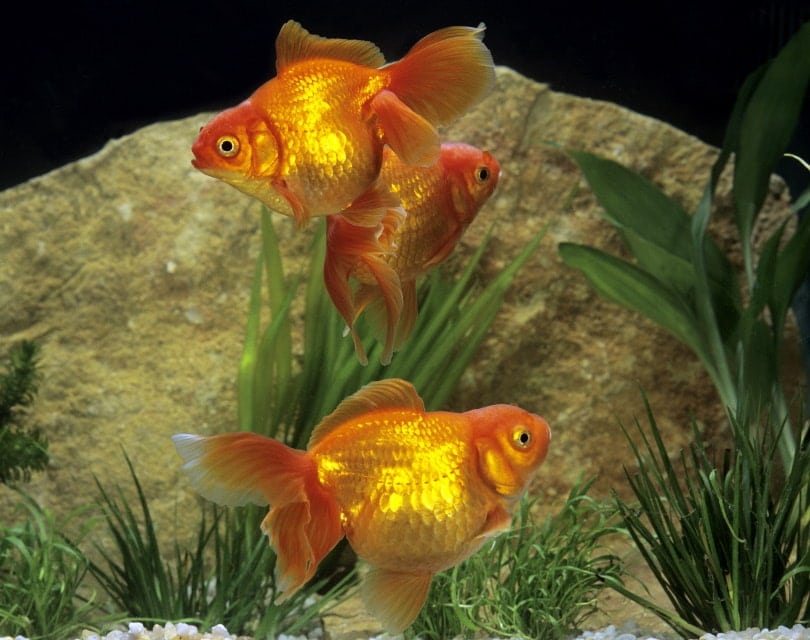
| Size | 6–10 inches (15.2–25.4 cm) |
| Diet | Omnivore |
| Minimum tank size | 10 gallons (38 liters) |
| Care Level | Easy |
| Temperament | Peaceful |
Fancy Goldfish are available in multiple varieties to suit the needs of your tank. They are generally peaceful fish, but they can be curious and are known to eat just about any tank mate they can fit in their mouth. What makes fancies a better option than common Goldfish is that fancies tend to tolerate warmer temperatures than commons. Common Goldfish may not be comfortable sharing a tank with Yoyo loaches, who prefer tropical water temperatures.
5. Bristlenose Plecostomus
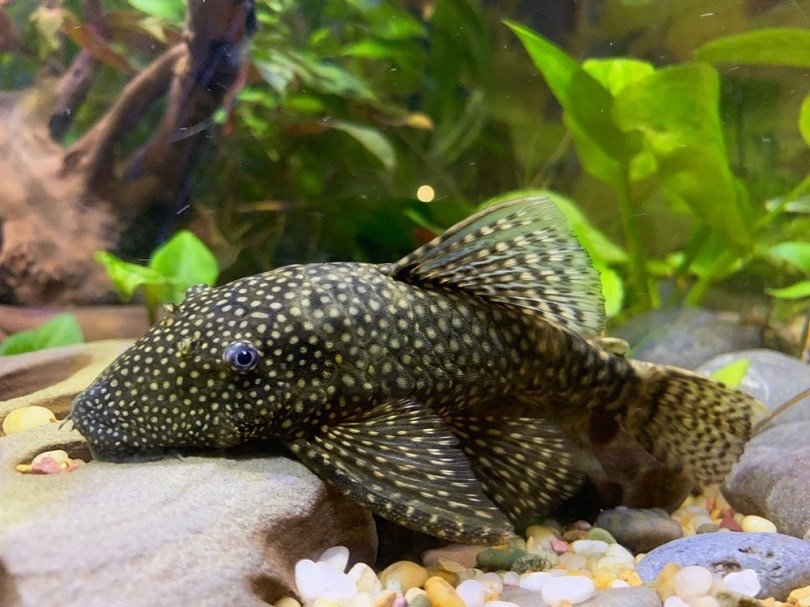
| Size | 3–5 inches (7.6–12.7 cm) |
| Diet | Omnivore |
| Minimum tank size | 20 gallons (76 liters) |
| Care Level | Easy |
| Temperament | Social |
The Bristlenose Pleco is a peaceful but social fish that makes a great tank mate to many types of fish. Their armored scales allow for them to withstand overly curious tank mates, although they should not be forced to tolerate bullying and fin-nipping. These fish are primarily herbivorous and are great algae eaters, but they should also be provided with some protein sources, like bloodworms, and plenty of algae wafers and fresh veggies.
6. Pearl Gourami
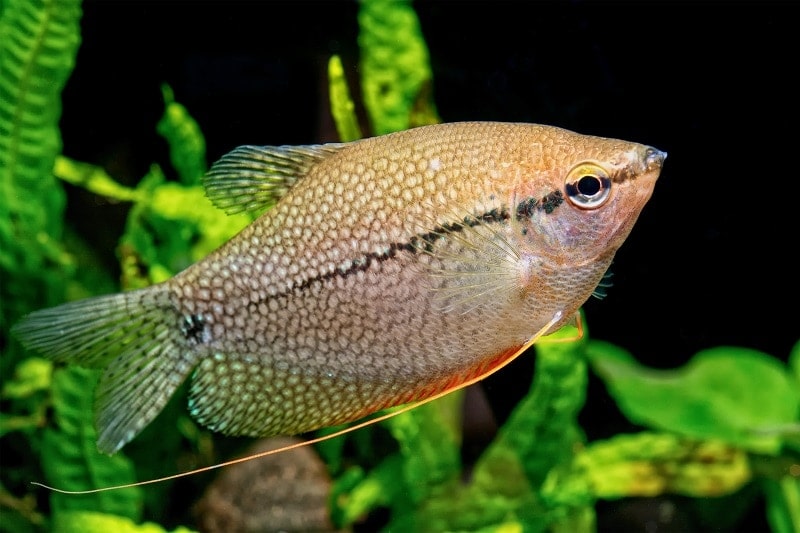
| Size | 4–5 inches (10.2–12.7 cm) |
| Diet | Omnivore |
| Minimum tank size | 30 gallons (114 liters) |
| Care Level | Easy |
| Temperament | Peaceful |
The Pearl Gourami is a beautiful fish that can bring a lot of color to your tank. These fish are peaceful, although males can be territorial toward each other or toward other types of male Gourami. They will stand up for themselves to tank mates if needed but spend most of their time in the middle and upper portions of the water column, so Pearl Gourami and Yoyo loaches will rarely cross paths.
7. Boesemani Rainbowfish
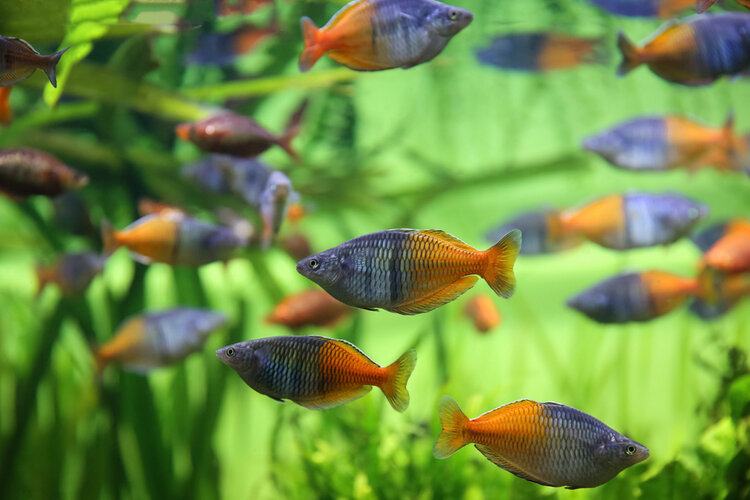
| Size | 4–4.5 inches (10.2–11.4 cm) |
| Diet | Omnivore |
| Minimum tank size | 25 gallons (95 liters) |
| Care Level | Easy |
| Temperament | Peaceful |
One of the most colorful tank mate options for Yoyo loaches is the Boesemani Rainbowfish. These beautiful fish are peaceful community fish that will help keep your tank clear of algae. Unfortunately, these fish are becoming endangered in the wild and the aquarium trade may be partially to blame. Ensure you only purchase these fish from breeders and not wild-caught sources. They should be kept in groups of at least six fish and love having open space to swim.
8. Mollies
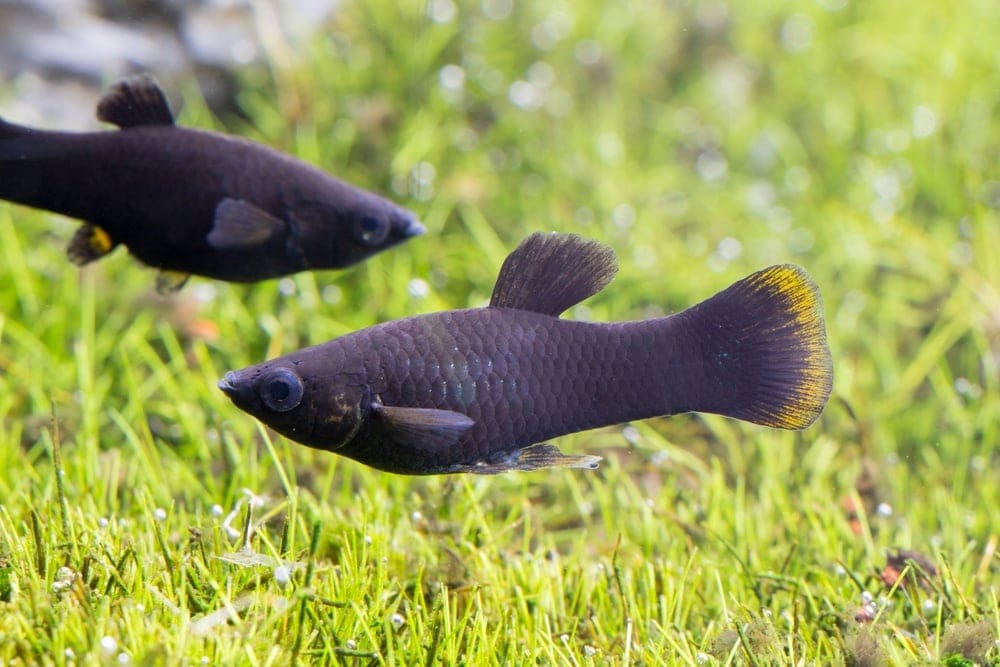
| Size | 3–4.5 inches (7.6–11.4 cm) |
| Diet | Omnivore |
| Minimum tank size | 10 gallons (38 liters) |
| Care Level | Easy |
| Temperament | Generally peaceful |
If you’re looking for a hardy fish that will reproduce easily in your tank, then Mollies may be what you’re looking for. These fish are available in multiple color morphs and they are active community fish. They are livebearers, so be aware that some tank mates will eat Molly fry. Mollies are generally peaceful fish, but they are known to nip at fins on occasion. However, they spend most of their time in the upper portion of the water column, so they likely won’t interact with your Yoyo loaches much.
9. Zebra Danio
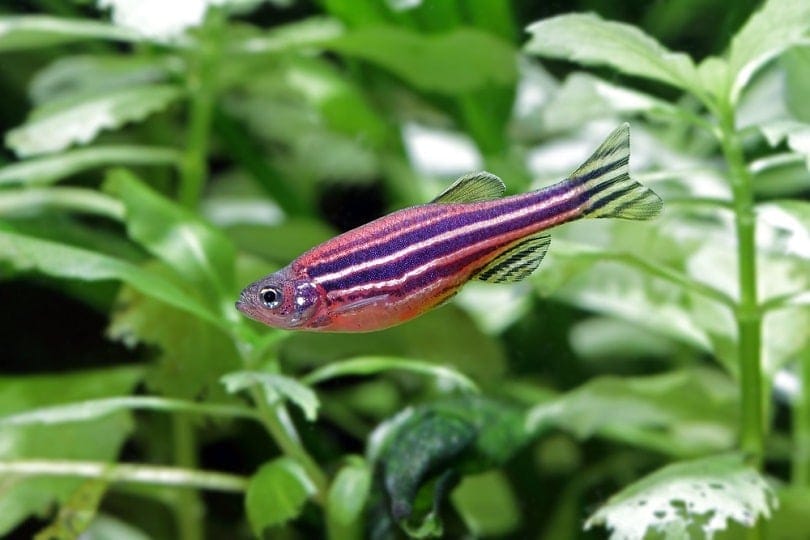
| Size | 1–2 inches (2.5–5.1 cm) |
| Diet | Omnivore |
| Minimum tank size | 10 gallons (38 liters) |
| Care Level | Easy |
| Temperament | Social, curious |
Zebra Danios are peaceful shoaling fish that prefer to be kept in groups of at least six fish. They are social fish and tend to be curious about tank mates. They may nip at fins, especially if the tank environment is stressful, but they typically won’t bother their tank mates outside of occasionally checking them out. These fish are extremely easy to care for and are known for their prolific breeding habits.
10. Green Swordtail

| Size | 5–6.5 inches (12.7–16.5 cm) |
| Diet | Omnivore |
| Minimum tank size | 20 gallons (76 liters) |
| Care Level | Easy |
| Temperament | Peaceful, social |
These little fish are livebearers that reproduce readily. Green Swordtails are closely related to Platies, to the point that they can interbreed. They are community fish, but they are not true shoaling fish. They can be kept in groups and seem to appreciate each other’s company. However, males tend to fight other males over breeding rights, so these fish do best in harems or with at least three females for every male. Aside from breeding disagreements, Green Swordtails are typically very peaceful.
What Makes a Good Tank Mate for Yoyo Loaches?
Ideal tank mates for Yoyo loaches are fish that are generally peaceful or spend most of their time in the middle to upper portions of the water column. Semi–aggressive fish that spend time in the upper portions of the tank can be good tank mates as long as they don’t actively seek out tank mates to bully. Community fish and peaceful bottom feeders are great options for Yoyo loach tank mates. Avoid anything small enough for the loaches to eat, like dwarf shrimp and snails.
Where Do Yoyo Loaches Prefer to Live in the Aquarium?
Yoyo loaches are typically scavengers and spend almost all of their time toward the bottom of the tank. You may spot them on the tank floor or swimming around in the lower portions of the water column. It’s not out of the question to see them elsewhere in the tank, but areas that allow for scavenging are their preference.
Water Parameters
Native to parts of Nepal and the Ganges River in India, Yoyo loaches prefer warm, acidic to neutral water. You may also see them referred to as Pakistani loaches, which is an incorrect title because these fish are not found anywhere in Pakistan. They are hardy and tolerant of a broad range of water parameters as long as they stay consistent.
Aim to keep the pH between 5.5–8.0. They seem to prefer a pH between 6.0–7.5, though. They also prefer warm water, with their potential temperature range being from 68–86°F (20–30°C), but you should aim to keep the temperature closer to 75–80°F (23–27°C). Although they are found in rivers, they inhabit slow-moving areas, so keep the water flow in the tank slow.
Size
While some loaches get quite large, the Yoyo loach tends to stay on the smaller size. They rarely exceed 6 inches (15.2 cm) in length. Sometimes, adult Yoyo loaches only grow to 5–5.5 inches (12.7–14 cm).
Aggressive Behaviors
Yoyo loaches are not typically aggressive fish, but they are considered to be semi-aggressive because of some of their behaviors. They tend to team up with each other to bully smaller or weaker Yoyos but keeping them in groups of multiple fish usually reduces the risk of this behavior occurring by making it difficult to determine an individual target.
When it comes to tank mates, Yoyo loaches are usually peaceful. They are extremely curious and active fish, though. This means that there is a chance of your Yoyos nosing at or otherwise annoying tank mates. They don’t make good tank mates to fish that are overly timid, especially those that stay near the bottom of the water column.

The 3 Benefits of Having Tank Mates for Yoyo Loaches in Your Aquarium
1. Preventing Aggression and Bullying
Yoyo loaches don’t like to live alone, but since they tend to team up on smaller and weaker loaches, providing a group of Yoyo tank mates will reduce the chance of a bullying target developing.
2. Filling the Water Column
As active as Yoyo loaches are, they stay toward the bottom of the tank. Adding tank mates that spend time in the middle and upper portions of the water column will help add movement and activity to every level of the tank.
3. Creating Enrichment
Since Yoyos are extremely curious fish, providing tank mates can enrich the environment for your Yoyos. They will enjoy checking out their tank mates, especially other bottom dwellers.
What’s in a Name?
If you’re curious about the unusual name, there’s a simple explanation of why they’re called Yoyo loaches. When they are juveniles, the maze-like pattern on these fish looks like the letters Y and O. Seeing how this pattern is laid out, you can see that it spells “yoyo” down the length of the fish’s body. As they age, this pattern becomes more complex and usually loses the distinctness of the letters, so if you’re viewing an adult Yoyo loach, you may not see the Y or the O.
Conclusion
Yoyo loaches are fascinating, active fish that will happily be the stars of your tank. They are playful, curious, and have a real zest for scavenging. They can be great tank mates when paired with carefully selected fish, but their boisterousness may be too much for timid bottom dwellers. Keep an eye out for your Yoyos harassing their tank mates, though. Sometimes their overly curious nature causes them to become tank pests and bullies.
Make sure you are keeping multiple Yoyo loaches together in your tank. They are highly social, especially with other Yoyos. Keeping one or two Yoyos together may lead to stress and loneliness. Keeping too small of a group may lead to one fish becoming the target of bullying. Always aim to keep at least five loaches in your tank.
Featured Image Credit: Guillermo Guerao Serra, Shutterstock



